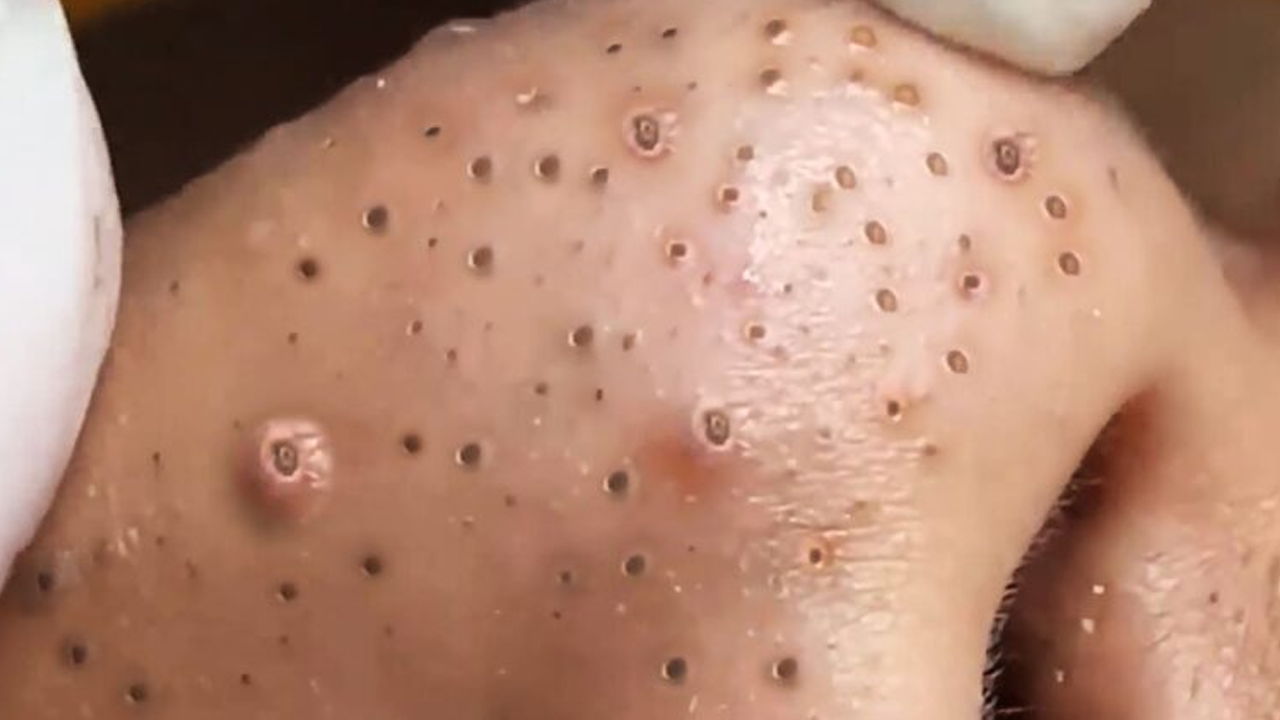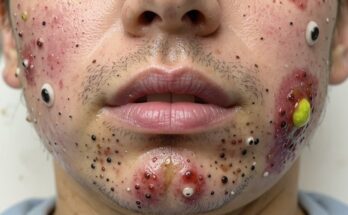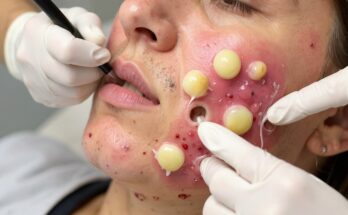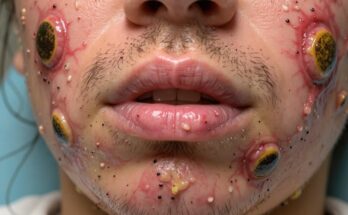Unmasking Blackheads: A Comprehensive Guide to Prevention and Treatment
Blackheads, those pesky dark spots that mar our complexion, are more than just a cosmetic nuisance. Understanding their formation is the first step towards effective management.
The Science Behind Blackheads: What Causes Them?
The Perfect Storm: Sebum, Dead Skin Cells, and Bacteria
Blackheads, technically known as open comedones, arise from a simple yet frustrating process. Excess sebum (oil) produced by your skin’s sebaceous glands combines with dead skin cells. This mixture, along with bacteria naturally present on your skin, gets trapped within a hair follicle, clogging the pore. The trapped sebum oxidizes, reacting with air to create the characteristic dark color – a misconception often attributed to dirt. This clogged pore is the breeding ground for a blackhead, commonly appearing on the nose, chin, forehead, chest, and back.
Preventing Blackhead Formation: Proactive Skincare
Preventing blackheads is far easier than treating them. A consistent, gentle skincare routine is paramount.
The Power of Cleansing and Exfoliation
Regular cleansing with a mild, salicylic acid (BHA) or glycolic acid (AHA)-based cleanser is crucial. These acids help to dissolve excess oil and exfoliate dead skin cells, preventing pore blockages. Supplement this with chemical exfoliation 2-3 times a week using a BHA or AHA product. Avoid harsh physical scrubs that can irritate and damage the skin. Remember, the goal is to gently unclog, not aggressively attack, your pores.
The Importance of Hydration and Sun Protection
Even with diligent cleansing and exfoliation, maintaining a healthy skin barrier is vital. Use a non-comedogenic moisturizer to keep your skin hydrated without clogging pores. Daily sunscreen application is equally important. UV damage can worsen pores and pigmentation, exacerbating blackheads and other skin concerns.
Treating Existing Blackheads: Safe and Effective Methods
If blackheads already exist, several methods can help, but proceed with caution.
Safe at-Home Blackhead Removal: A Step-by-Step Guide
- Cleanse: Start with a gentle cleanse using warm water to soften the skin and open pores.
- Steam (Optional): Steaming your face for 5-10 minutes can further loosen blackheads.
- Exfoliate: Apply your chosen BHA or AHA exfoliant.
- Extraction (with caution): If attempting extraction, use a sanitized comedo extractor tool and apply gentle pressure. Avoid forceful squeezing which can lead to scarring and infection. Pore strips offer temporary relief but don’t address the root cause.
- Clay Mask: A weekly clay mask (bentonite or kaolin) can help absorb excess oil and tighten pores.
- Moisturize: Finish with a non-comedogenic moisturizer.
- Targeted Treatments: Consider incorporating retinoids into your routine, they promote cell turnover and prevent clogged pores.
When Professional Help is Necessary
Persistent, inflamed blackheads or severe acne warrant professional intervention. A dermatologist can offer various treatments, including professional extractions, chemical peels, and prescription-strength topical or oral medications (such as antibiotics or isotretinoin). Laser therapy might be an option for those who haven’t seen success with other treatments. For hormonal acne, addressing the underlying hormonal imbalances is crucial for long-term improvement.
Ingredients to Look For and Avoid
The Powerhouse Ingredients
- Salicylic Acid (BHA): Deeply penetrates pores to unclog them.
- Glycolic Acid (AHA): Exfoliates the skin’s surface, promoting cell turnover.
- Retinoids: Prevent clogged pores and reduce blackhead formation.
- Tea Tree Oil: Possesses antimicrobial properties that may help reduce blackheads.
What to Steer Clear Of
- Over-squeezing or using dirty tools: Increases the risk of infection and scarring.
- Strong alcohol-based toners: Can irritate and dry out the skin, potentially worsening the problem.
- Over-washing: Stimulates increased oil production.
- Harsh physical scrubs: Can damage your skin’s protective barrier.
- Pore strips and vacuums: While offering temporary results, these methods may cause skin irritation and are not always effective.
Long-Term Blackhead Management: A Holistic Approach
Consistent skincare is key. Remember to cleanse, exfoliate, moisturize, and protect your skin with daily sunscreen use. Addressing any underlying hormonal imbalances is crucial for long-term management of hormonal acne. By understanding the causes of blackheads and implementing a proactive skincare regimen, you can achieve clearer, healthier skin.









